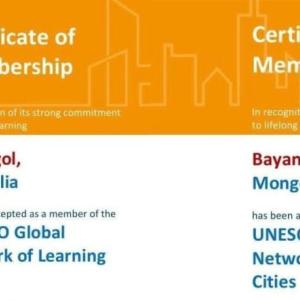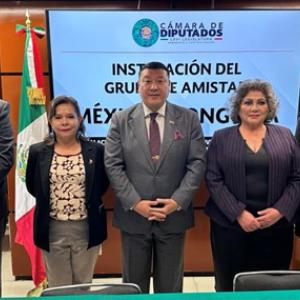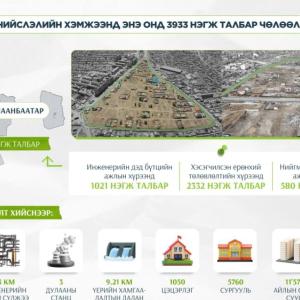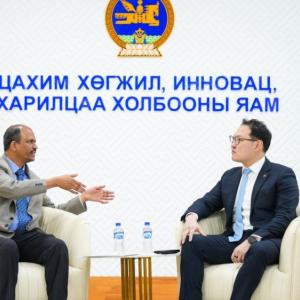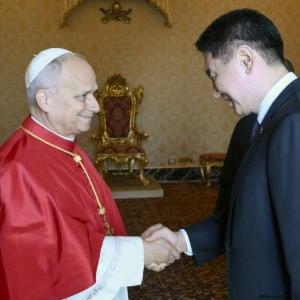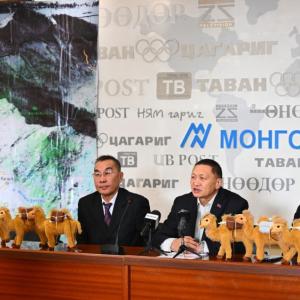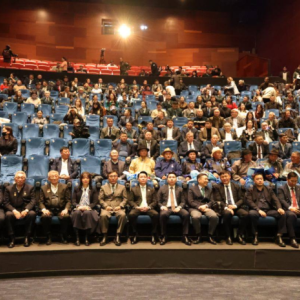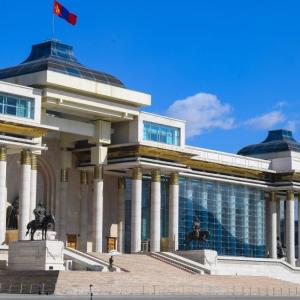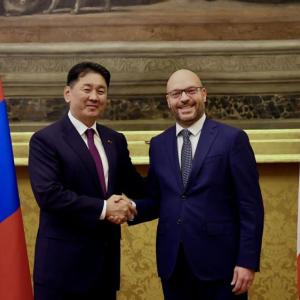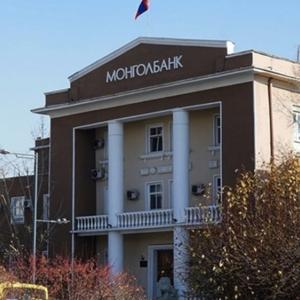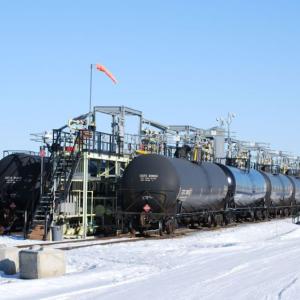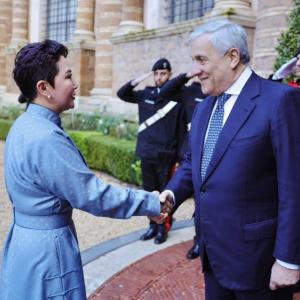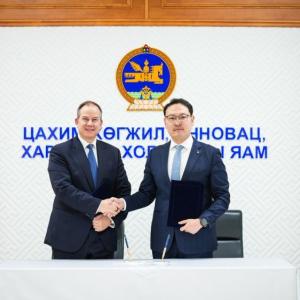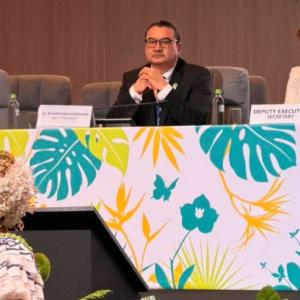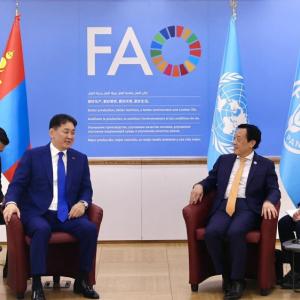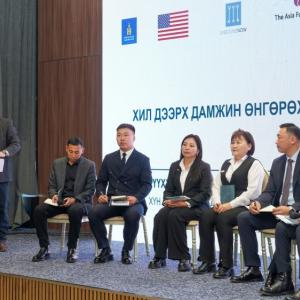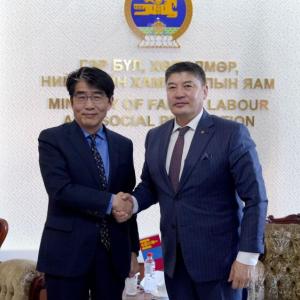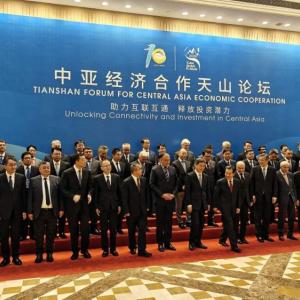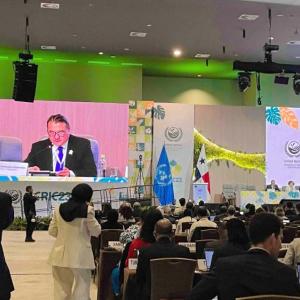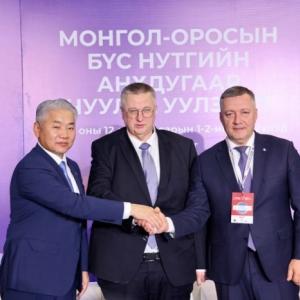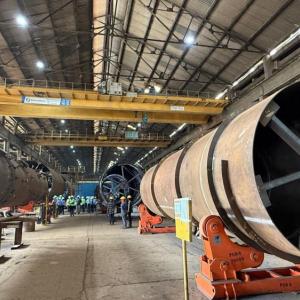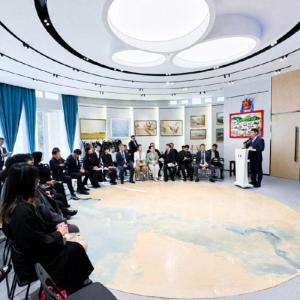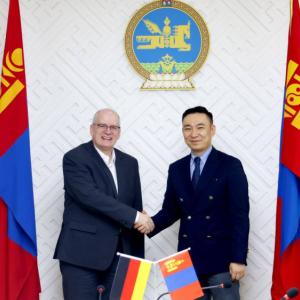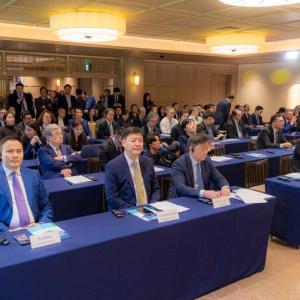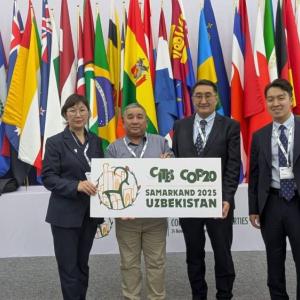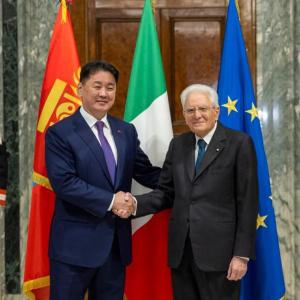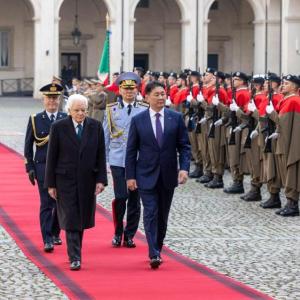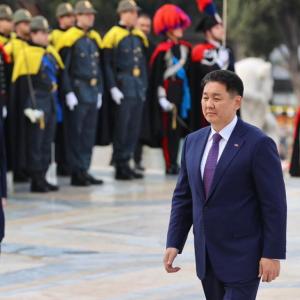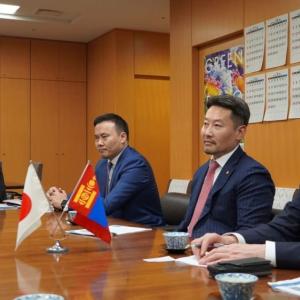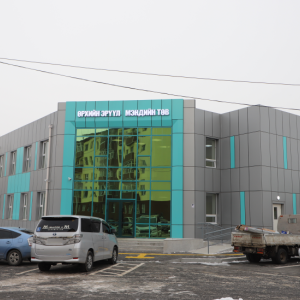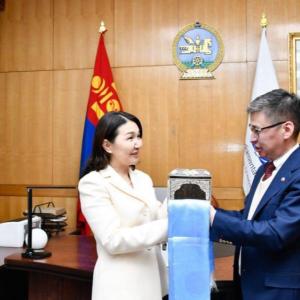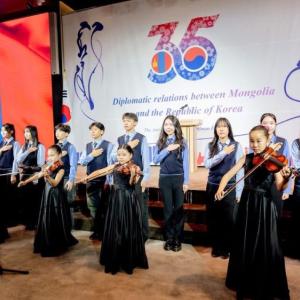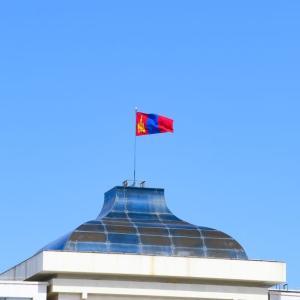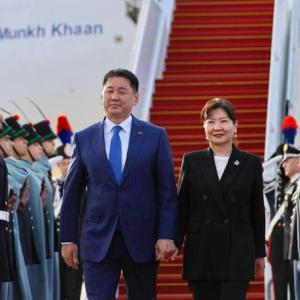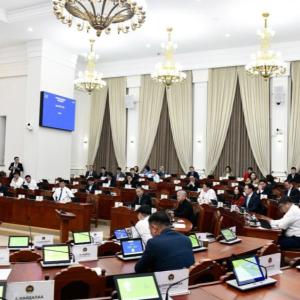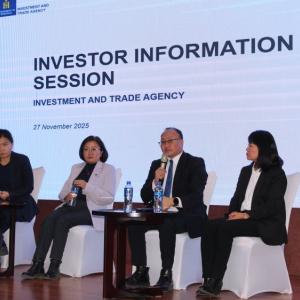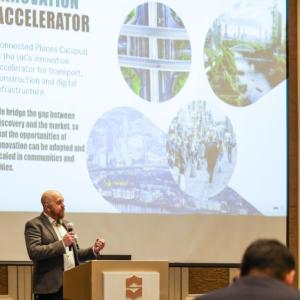Development Bank of Mongolia is now on the right path
The Mongol Messenger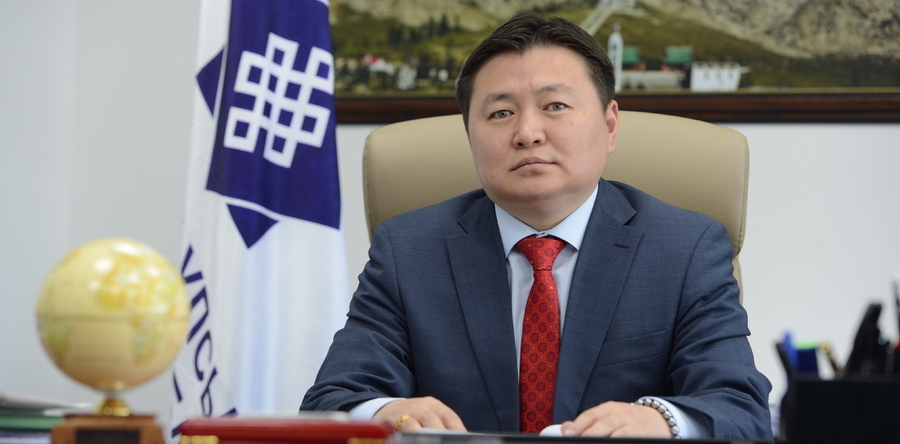
Ulaanbaatar /MONTSAME/ During the Government’s inspection of the Development Bank of Mongolia, an MNT 1.3 trillion discrepancy was noticed and the bank was on verge of bankruptcy, losing both governance and financial independence. Accordingly, the Government took immediate actions to adjust the issues and appointed a new executive team. We met with Mr. Ch.Enkhbat, the First Deputy Chief Executive Officer of Development Bank of Mongolia to discuss the issues as well as the bank’s policy, aims and further actions.
It has been some time since the Executive team was assembled. What has the Executive team accomplished since then?
We received the office in September, 2016 and settled several issues since then. At the time, the bank’s asset quality and prudential rations were at a loss. Due to the loss of certain indicators, some foreign investment was retracted before the due date and the risk of cross default arose because of the bank's inability to repay. On the other hand, the loan portfolio was aggravated because of legislation and internal regulation violations. For example, the state of loan repayment and quality were unsatisfactory.
The new executive team focused on improving the bank balance first. As a result, negotiations were held on preventing foreign investments from withdrawing and paid special attention to reform, promote future actions, and improve its loan portfolio. The Parliament and Government provided support and approved a decree on the “Law on Development Bank of Mongolia” in 2016 and decided to increase the Development Bank’s assets by MNT 1 trillion. The decree also included transferring the projects and programs financed from the State Budget through the Development Bank to the Government as a repayable loan and assigned a working team. Furthermore, the legal environments were improved and the revision included the the suggestions of other ministries. On February 10, 2017, Parliament and Government approved the Revision of Law on Development Bank of Mongolia, which includes independency, authority to self-select projects and programs, as well as high responsibility and inspections. The revision has started taking effect since April 1.
What were the results of this revision? At the time, the legal refinement was considered the main issues that were slowing the operations of Development Bank. What can you say about the expected results?
The previous law was approved in 2011 and implemented for six years. During this time, the Development Bank was heavily dependent on the Government. In other words, the governing political party and Government’s policy had too much influence in its operation. Other countries viewed Mongolia as the next Qatar or Kuwait. However, faulty monetary and budget policies of the governing political party, as well as the price drop of primary export commodities, the economic situation had gotten worse. As a result, negative effects such as leaving foreign investments, declining export revenues, decreasing currency reserves and the weakening exchange rate of MNT manifested. When the economy was relatively good, the Government issued MNT 1.5 billion in Chinggis Bonds. They gave assignments on financing major projects and programs using foreign investments, including Samurai and Chinggis bonds. But the disbursement was less effective. The previous law stated to only implement projects approved by the Government. The Government led by Ch.Saikhanbileg and N.Altankhuyag allocated a majority of the fund to street maintenance, infrastructure and road projects that were not approved by the Government. This affected the bank’s loan portfolio. In addition, several loans were issued by violating the bank’s rules. Therefore, in order to prevent the same mistakes from happening, we stated detailed requirements, inspection and accountability mechanisms of further projects and programs in the revision. On the other hand, the revision was prepared in accordance with the bank’s policy, regulations and created a secure, responsible, transparent and bureaucracy-free legal environment for project selection and financing processes. The revised law will have positive short-term effects on our operations.
The Development Bank is responsible for financing major projects and programs aimed at Mongolia’s development. In the past years, a total of MNT 3 trillion were funded from the State Budget as a repayable loan. What is the current state of repayment now?
As of December 30, 2016, before transferring the projects funded by the State Budget to the Government, the Development Bank has financed a total of MNT 6 trillion worth of projects in 6 years and MNT 3.3 trillion was funded from the State Budgetas a repayable loan. The remaining MNT 2.7 billion was issued directly from the Development Bank and through commercial banks. Obviously, repayment of the State Budget was paid to the budget. At the time, the International Monetary Fund, World Bank and the public criticized Mongolia for having multiple budgets, instead of one unified budget. The current governing political party, which was the opposition at the time, also made several demands on having a unified budget. As a result, unified budget was created with the joint Government in 2015. Specifically, the list of projects and programs financed by Development Bank has started approving as a component of the Law on Budget. The repayable loans financed from the State Budget have started transferring to the Government and determined the interest rates. All related ministries formed working groups and closed the projects after transferring them. As for the sixteen major projects and over 1600 private entity loans financed directly from the Development Bank, they are making repayment now. Obviously, the issues concerning repayment still exist as the current state of economy is causing private businesses to operate at a loss.
You mention the situation was dire when you took the office. How long did it take the Development Bank to increase its assets?
When we started, the equity of the bank was around MNT 240 billion. The new executive team increased it to MNT 1.1 trillion. The previous executives didn’t take measures on preventing loss from the exchange range within time, so the bank suffered tremendous losses. We’re taking actions to prevent such irresponsible, non-professional and serious mistakes from happening in the future. This greatly reduced the risks as well.
What are the major projects and programs that are being financed by the Development Bank right now? Are there any that qualify?
With the previous law, the Development Bank financed projects approved bythe Parliament and Government. The new law provided an opportunity to independently hold project selections. The Development Bank is issuing long-term, low-interest and export-oriented loans in accordance with the Concept of Sustainable Development of Mongolia and medium-term development policy. Research on operational projects has been conducted with the related ministries, Chamber of Commerce and National Innovation Committee. Within frames of the research, 40 projects were selected after reviewing around 1000 projects.
Which sector projects were selected?
The selected projects in agriculture, mining, road and transportation and energy sectors are able to be implemented.
Practices of developed countries show that most of other countries issue low-interest rate bonds with a 30-40 year term to develop infrastructure. As for Mongolia, we set a record for constructing infrastructure with a 5-year bond with 5.1 percent interest rate. In other words, the majority of the Chinggis bond, which is USD 1.5 billion, was spent on dead assets such as roads. Did the new law include any articles to prevent this?
Indeed, Mongolia is the only country that builds roads with short-term high-interest rate commercial bank loans. Therefore, we included a specific article in the revision. Even IMF supported the article which states that the Parliament and Government are to not involve the projects financed by Development Bank. The projects financed by the Development Bank have to be economically and financially efficient. Furthermore, we’ve included an article to fully ensure the requirements of loan repayment. This means the projects that yield profits in 20-30 years, such as maintenance and roads will not be invested. An opportunity for investing in crucial projects that would increase exports such as railroads, is now available. Previously, the Development Bank financed projects bearing 100 percent of the risk. The new law requires the Development Bank to co-finance all projects and programs. Accordingly, the risk will be split between the investors and project developers. Another mistake of the previous Government was the lack of feasibility studies and drawing foreign investment without any operational project. The government paid a meaningless interest rate because there weren’t any projects to work with. Therefore, we’re aiming to attract a necessary amount of loans for satisfactory projects to avoid such mistakes.
In connection with implementation of the IMF’s program, was there any change in the Development Bank’s activities?
One of the IMF’s requirements was to separate the Development Bank from the Government and independently operate, prevent the Government from making budget financing and attract investments without the approval of the Government. Also, in connection with the IMF’s three-year program “Extended Fund Facility”, certain restrictions could be made on Development Bank’s funding to ensure coherence of budget and monetary policies.
Other countries take actions based on long-range research. How does the Development Bank consider projects based on research?
Good question. In order to finance major projects and programs that impact the country’s economy, it is important to make well-grounded and accurate decisions. Therefore, our research team is formed of professionals and the decisions have to pass through several stages, requiring professional practices in the process. Furthermore, we are focusing to adapt software and research methods necessary for automating the research and assessing the results more accurately.
Project financing is a new concept in Mongolia that, instead of mortgages, focuses on the results and conditions for success. While the risk is high for the project implementer, it's reduced by a joint agreement of multilateral financial organizations. Therefore, we’re working actively on technical assistance and co-financing to expand cooperation with foreign and domestic financial organizations.
Last year, the Development Bank of Mongolia signed a memorandum of understanding with Sberbank of Russia. And we’re cooperating with number of countries’ development and export-import banks.
It has been some time since Mongolia established a Free Trade Agreement with Japan. But the number of products exporting to Japan is very few. How does the Development Bank finance export-oriented projects and programs?
Based on the Law on Development Bank, objectives on researching and financing major import-replacing projects are in effect. This includes “Gold-2” and “First Meat and Milk” campaigns supported by the government’s policy. We’re also researching and financing the qualifying projects of the private entites. On that note, the private entities are now open to cooperate with Development Bank. We updated our website and allowed project financing requests to be made online. Further information is available at www.dbm.mn.
60 percent of other countries’ Development Banks focus on small and middle-sized enterprises and invest in them. Is it possible for the Development Bank to support SMEs and start-up businesses?
The main purpose of the Development Bank is to provide long-term low-interest rate financing for major projects that are inaccessible from commercial banks. Within the framework of supporting SMEs, Development Bank issued loans through commercial banks to numerous small projects approved by the Government in the last 6 years. Proof of that is the provision of MNT 1.7 trillion loans funded to the private entities through commercial banks. In other words, commercial banks issue small loans for entities and Development Bank, as a policy bank, links the financial source to provide low-interest rate loans to commercial banks and they finance start-up businesses and SMEs. During the first bilateral government-level conference between Mongolia and Kuwait that recently took place in Kuwait, a negotiation was made to receive soft loans to support SMEs and job creating projects from Kuwait Fund for Arab Economic Development.
Is Development Bank seeking to raise funds from international markets in the mid-term?
We’re cooperating with the development banks of Russian Federation, People’s Republic of China, Asia-Pacific region and European Union members. Considering the credit rating and economic state of Mongolia, attracting loans and issuing a bond will have require high interest-rates. Therefore, a profitable version for private entities is very limited. In March, 2017, the Government released a Khuraldai Bond with an 8.75 percent interest-rate. For instance, providing 9 percent interest-rate loans to private businesses will be fairly high when you include the expenses. So, instead of issuing a bond, cooperating with foreign financial organizations on certain project will have lower interest rate of around 4-5 percent. Which means, raising funds for a specific project rather than attracting meaningless large sum of capital will better benefit the loaners. Low-interest rate bonds will be available once the economy recovers and the credit rating improves.
Since Mongolia is a country for young people, it is possible to accumulate savings. Foreign experts once mentioned that instead of receiving high-interest rate loans from other countries, it is highly possible to increase pension funds and use it for financing. In this scenario, how is the Development Bank reforming and relating it to the development policy?
The previous executive team approved a mid to long-term plan of Development Bank in 2015. There is much to take and toss from the plan. We perceived it as a general plan of the bank and we’re preparing a mid to long term program. This strategic program will be a wide-range of plan for diversifying the economy and co-align it with Mongolia’s long-term development concept and mid-term policy documents.
The public had high expectations for the Development Bank and its contribution to the economy. However, the bank failed to meet the expectations in the past few years. And now, the public expects the new executive team on conforming Development Bank’s operation to international standards. What’s your thought on that?
A strong foundation decides the future of anything and everything. The Development Bank is almost like a six year old child if it was a person. Yes, there were some mistakes in the past but that opens more room for development as we learned from that mistake. Therefore, the new team organized the legal grounds and balance in a fairly short amount of time. I have to say that Parliament and the Government provided considerable support for these operations to be successful. By setting right regulations and law, the operation of this organization will not be disturbed by any successors. We’re working to make that happen. Secondly, we’ll strengthen inspection, risk assessment and accountability systems. In the last 6 years, the internal inspection was weak and no monitoring was available for the Central Bank. The new law included an article to allow central bank’s monitoring. Furthermore, the Government will be biennially confirming whether if the bank has financed export-oriented projects and programs in accordance with the development policy or not. There is an internal inspection unit operating under the board of directors as well. It is safe to assume that Development Bank has become more supervised, transparent and responsible with the new law.
How is the bank focusing on human resource policies?
Human resource policy is the soul of an organization. The success of any organization is determined by their staff. In order to study major projects and making good decisions, a professional team is critical. Therefore, the Development Bank is focusing on forming experts’ team in our human resource policy. Many of the previous high-performance staff members are still working with us. As for employees with mediocre performance, we’re giving limited-time assignments and training. If they remain unsatisfactory, we’re replacing them with higher-skilled personnel. The job offers are announced online on www.dbm.mn, including the executives’ offer.
Finally, what would you like to say to our readers?
The public had mixed thoughts on whether the Development Bank was necessary. I believe only time will show that. However, we are working earnestly to prove its necessity. With the support of Parliament and the Government, we are striving to strengthen the legal environment, stabilize our activities and contribute to the development of our country. More specifically, I dully note that the Development of Mongolia is now on its right path.
It has been some time since the Executive team was assembled. What has the Executive team accomplished since then?
We received the office in September, 2016 and settled several issues since then. At the time, the bank’s asset quality and prudential rations were at a loss. Due to the loss of certain indicators, some foreign investment was retracted before the due date and the risk of cross default arose because of the bank's inability to repay. On the other hand, the loan portfolio was aggravated because of legislation and internal regulation violations. For example, the state of loan repayment and quality were unsatisfactory.
The new executive team focused on improving the bank balance first. As a result, negotiations were held on preventing foreign investments from withdrawing and paid special attention to reform, promote future actions, and improve its loan portfolio. The Parliament and Government provided support and approved a decree on the “Law on Development Bank of Mongolia” in 2016 and decided to increase the Development Bank’s assets by MNT 1 trillion. The decree also included transferring the projects and programs financed from the State Budget through the Development Bank to the Government as a repayable loan and assigned a working team. Furthermore, the legal environments were improved and the revision included the the suggestions of other ministries. On February 10, 2017, Parliament and Government approved the Revision of Law on Development Bank of Mongolia, which includes independency, authority to self-select projects and programs, as well as high responsibility and inspections. The revision has started taking effect since April 1.
What were the results of this revision? At the time, the legal refinement was considered the main issues that were slowing the operations of Development Bank. What can you say about the expected results?
The previous law was approved in 2011 and implemented for six years. During this time, the Development Bank was heavily dependent on the Government. In other words, the governing political party and Government’s policy had too much influence in its operation. Other countries viewed Mongolia as the next Qatar or Kuwait. However, faulty monetary and budget policies of the governing political party, as well as the price drop of primary export commodities, the economic situation had gotten worse. As a result, negative effects such as leaving foreign investments, declining export revenues, decreasing currency reserves and the weakening exchange rate of MNT manifested. When the economy was relatively good, the Government issued MNT 1.5 billion in Chinggis Bonds. They gave assignments on financing major projects and programs using foreign investments, including Samurai and Chinggis bonds. But the disbursement was less effective. The previous law stated to only implement projects approved by the Government. The Government led by Ch.Saikhanbileg and N.Altankhuyag allocated a majority of the fund to street maintenance, infrastructure and road projects that were not approved by the Government. This affected the bank’s loan portfolio. In addition, several loans were issued by violating the bank’s rules. Therefore, in order to prevent the same mistakes from happening, we stated detailed requirements, inspection and accountability mechanisms of further projects and programs in the revision. On the other hand, the revision was prepared in accordance with the bank’s policy, regulations and created a secure, responsible, transparent and bureaucracy-free legal environment for project selection and financing processes. The revised law will have positive short-term effects on our operations.
The Development Bank is responsible for financing major projects and programs aimed at Mongolia’s development. In the past years, a total of MNT 3 trillion were funded from the State Budget as a repayable loan. What is the current state of repayment now?
As of December 30, 2016, before transferring the projects funded by the State Budget to the Government, the Development Bank has financed a total of MNT 6 trillion worth of projects in 6 years and MNT 3.3 trillion was funded from the State Budgetas a repayable loan. The remaining MNT 2.7 billion was issued directly from the Development Bank and through commercial banks. Obviously, repayment of the State Budget was paid to the budget. At the time, the International Monetary Fund, World Bank and the public criticized Mongolia for having multiple budgets, instead of one unified budget. The current governing political party, which was the opposition at the time, also made several demands on having a unified budget. As a result, unified budget was created with the joint Government in 2015. Specifically, the list of projects and programs financed by Development Bank has started approving as a component of the Law on Budget. The repayable loans financed from the State Budget have started transferring to the Government and determined the interest rates. All related ministries formed working groups and closed the projects after transferring them. As for the sixteen major projects and over 1600 private entity loans financed directly from the Development Bank, they are making repayment now. Obviously, the issues concerning repayment still exist as the current state of economy is causing private businesses to operate at a loss.
You mention the situation was dire when you took the office. How long did it take the Development Bank to increase its assets?
When we started, the equity of the bank was around MNT 240 billion. The new executive team increased it to MNT 1.1 trillion. The previous executives didn’t take measures on preventing loss from the exchange range within time, so the bank suffered tremendous losses. We’re taking actions to prevent such irresponsible, non-professional and serious mistakes from happening in the future. This greatly reduced the risks as well.
What are the major projects and programs that are being financed by the Development Bank right now? Are there any that qualify?
With the previous law, the Development Bank financed projects approved bythe Parliament and Government. The new law provided an opportunity to independently hold project selections. The Development Bank is issuing long-term, low-interest and export-oriented loans in accordance with the Concept of Sustainable Development of Mongolia and medium-term development policy. Research on operational projects has been conducted with the related ministries, Chamber of Commerce and National Innovation Committee. Within frames of the research, 40 projects were selected after reviewing around 1000 projects.
Which sector projects were selected?
The selected projects in agriculture, mining, road and transportation and energy sectors are able to be implemented.
Practices of developed countries show that most of other countries issue low-interest rate bonds with a 30-40 year term to develop infrastructure. As for Mongolia, we set a record for constructing infrastructure with a 5-year bond with 5.1 percent interest rate. In other words, the majority of the Chinggis bond, which is USD 1.5 billion, was spent on dead assets such as roads. Did the new law include any articles to prevent this?
Indeed, Mongolia is the only country that builds roads with short-term high-interest rate commercial bank loans. Therefore, we included a specific article in the revision. Even IMF supported the article which states that the Parliament and Government are to not involve the projects financed by Development Bank. The projects financed by the Development Bank have to be economically and financially efficient. Furthermore, we’ve included an article to fully ensure the requirements of loan repayment. This means the projects that yield profits in 20-30 years, such as maintenance and roads will not be invested. An opportunity for investing in crucial projects that would increase exports such as railroads, is now available. Previously, the Development Bank financed projects bearing 100 percent of the risk. The new law requires the Development Bank to co-finance all projects and programs. Accordingly, the risk will be split between the investors and project developers. Another mistake of the previous Government was the lack of feasibility studies and drawing foreign investment without any operational project. The government paid a meaningless interest rate because there weren’t any projects to work with. Therefore, we’re aiming to attract a necessary amount of loans for satisfactory projects to avoid such mistakes.
In connection with implementation of the IMF’s program, was there any change in the Development Bank’s activities?
One of the IMF’s requirements was to separate the Development Bank from the Government and independently operate, prevent the Government from making budget financing and attract investments without the approval of the Government. Also, in connection with the IMF’s three-year program “Extended Fund Facility”, certain restrictions could be made on Development Bank’s funding to ensure coherence of budget and monetary policies.
Other countries take actions based on long-range research. How does the Development Bank consider projects based on research?
Good question. In order to finance major projects and programs that impact the country’s economy, it is important to make well-grounded and accurate decisions. Therefore, our research team is formed of professionals and the decisions have to pass through several stages, requiring professional practices in the process. Furthermore, we are focusing to adapt software and research methods necessary for automating the research and assessing the results more accurately.
Project financing is a new concept in Mongolia that, instead of mortgages, focuses on the results and conditions for success. While the risk is high for the project implementer, it's reduced by a joint agreement of multilateral financial organizations. Therefore, we’re working actively on technical assistance and co-financing to expand cooperation with foreign and domestic financial organizations.
Last year, the Development Bank of Mongolia signed a memorandum of understanding with Sberbank of Russia. And we’re cooperating with number of countries’ development and export-import banks.
It has been some time since Mongolia established a Free Trade Agreement with Japan. But the number of products exporting to Japan is very few. How does the Development Bank finance export-oriented projects and programs?
Based on the Law on Development Bank, objectives on researching and financing major import-replacing projects are in effect. This includes “Gold-2” and “First Meat and Milk” campaigns supported by the government’s policy. We’re also researching and financing the qualifying projects of the private entites. On that note, the private entities are now open to cooperate with Development Bank. We updated our website and allowed project financing requests to be made online. Further information is available at www.dbm.mn.
60 percent of other countries’ Development Banks focus on small and middle-sized enterprises and invest in them. Is it possible for the Development Bank to support SMEs and start-up businesses?
The main purpose of the Development Bank is to provide long-term low-interest rate financing for major projects that are inaccessible from commercial banks. Within the framework of supporting SMEs, Development Bank issued loans through commercial banks to numerous small projects approved by the Government in the last 6 years. Proof of that is the provision of MNT 1.7 trillion loans funded to the private entities through commercial banks. In other words, commercial banks issue small loans for entities and Development Bank, as a policy bank, links the financial source to provide low-interest rate loans to commercial banks and they finance start-up businesses and SMEs. During the first bilateral government-level conference between Mongolia and Kuwait that recently took place in Kuwait, a negotiation was made to receive soft loans to support SMEs and job creating projects from Kuwait Fund for Arab Economic Development.
Is Development Bank seeking to raise funds from international markets in the mid-term?
We’re cooperating with the development banks of Russian Federation, People’s Republic of China, Asia-Pacific region and European Union members. Considering the credit rating and economic state of Mongolia, attracting loans and issuing a bond will have require high interest-rates. Therefore, a profitable version for private entities is very limited. In March, 2017, the Government released a Khuraldai Bond with an 8.75 percent interest-rate. For instance, providing 9 percent interest-rate loans to private businesses will be fairly high when you include the expenses. So, instead of issuing a bond, cooperating with foreign financial organizations on certain project will have lower interest rate of around 4-5 percent. Which means, raising funds for a specific project rather than attracting meaningless large sum of capital will better benefit the loaners. Low-interest rate bonds will be available once the economy recovers and the credit rating improves.
Since Mongolia is a country for young people, it is possible to accumulate savings. Foreign experts once mentioned that instead of receiving high-interest rate loans from other countries, it is highly possible to increase pension funds and use it for financing. In this scenario, how is the Development Bank reforming and relating it to the development policy?
The previous executive team approved a mid to long-term plan of Development Bank in 2015. There is much to take and toss from the plan. We perceived it as a general plan of the bank and we’re preparing a mid to long term program. This strategic program will be a wide-range of plan for diversifying the economy and co-align it with Mongolia’s long-term development concept and mid-term policy documents.
The public had high expectations for the Development Bank and its contribution to the economy. However, the bank failed to meet the expectations in the past few years. And now, the public expects the new executive team on conforming Development Bank’s operation to international standards. What’s your thought on that?
A strong foundation decides the future of anything and everything. The Development Bank is almost like a six year old child if it was a person. Yes, there were some mistakes in the past but that opens more room for development as we learned from that mistake. Therefore, the new team organized the legal grounds and balance in a fairly short amount of time. I have to say that Parliament and the Government provided considerable support for these operations to be successful. By setting right regulations and law, the operation of this organization will not be disturbed by any successors. We’re working to make that happen. Secondly, we’ll strengthen inspection, risk assessment and accountability systems. In the last 6 years, the internal inspection was weak and no monitoring was available for the Central Bank. The new law included an article to allow central bank’s monitoring. Furthermore, the Government will be biennially confirming whether if the bank has financed export-oriented projects and programs in accordance with the development policy or not. There is an internal inspection unit operating under the board of directors as well. It is safe to assume that Development Bank has become more supervised, transparent and responsible with the new law.
How is the bank focusing on human resource policies?
Human resource policy is the soul of an organization. The success of any organization is determined by their staff. In order to study major projects and making good decisions, a professional team is critical. Therefore, the Development Bank is focusing on forming experts’ team in our human resource policy. Many of the previous high-performance staff members are still working with us. As for employees with mediocre performance, we’re giving limited-time assignments and training. If they remain unsatisfactory, we’re replacing them with higher-skilled personnel. The job offers are announced online on www.dbm.mn, including the executives’ offer.
Finally, what would you like to say to our readers?
The public had mixed thoughts on whether the Development Bank was necessary. I believe only time will show that. However, we are working earnestly to prove its necessity. With the support of Parliament and the Government, we are striving to strengthen the legal environment, stabilize our activities and contribute to the development of our country. More specifically, I dully note that the Development of Mongolia is now on its right path.
B.Ariunzaya
The full interview originally appeared on Mongolia Today magazine's issue No. 2/41/ for April-June 2017 and The Mongol Messenger newspaper's issue No. 29 for July 21, 2017.
 Ulaanbaatar
Ulaanbaatar





